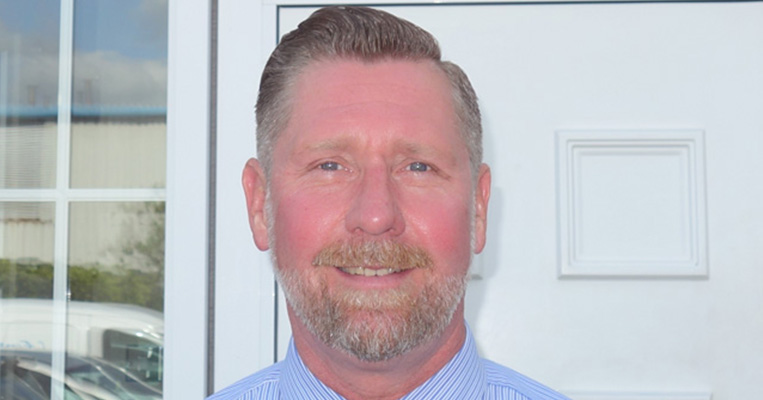The face of property safety: Michael Dray, Tech IOSH, Associated Surveying
Published on 10th July 2017

A former project manager at London Southend Airport, Michael Dray heads up Associated Surveying, part of the Gateway Group. His job takes him across the country to carry out Health & Safety and Fire Risk Assessments, as well as working closely with housebuilders, social landlords and the wider Gateway team. “Check and double-check” is Michael’s motto.
Michael had been at Gateway for over four years when the Group decided to set up Associated Surveying in September 2015. This separate business supports the nationwide portfolio of apartment blocks, housing schemes, sheltered homes and mixed-use developments under the care of Gateway Property Management. “Back in 2015, it was time to build a specialist business in this area, so we could best support the increasing number of managed properties. We wanted to continue offering these important services in-house, enabling our clients and their tenants to benefit from swift, seamless support.”
Associated Surveying is based in Gateway’s HQ, sitting within the property management team, explains Michael. “We liaise with members daily, which means we can get straight out and resolve any issues without delay. Together, we also plan assessments and prepare budgets, supported by our insurance valuations. It’s a close-knit group, which helps get tasks done efficiently.” Alongside professional building surveys and safety assessments to meet legislative requirements, the specialist company overseas property maintenance, upgrades and major works. “We also advise on complex insurance claims, support new property acquisitions and oversee the handover of new-build schemes for national and regional developers,” adds Michael.
Michael moved to Gateway in February 2011. His previous roles have been varied, including professionally training care support workers on the Management of Violence and Aggression (MOVA) in the workplace. At London Southend Airport, he managed the construction of £20 million plus corporate jets, collaborating with the likes of Bombardier. “The property side very much appealed,” says Michael. “At the airport, I was a member of the fire focus group for six buildings on Aviation Way, and throughout my career I’ve been involved in safety in some form. I took my first IOSH course in the early 1990s.” The Institution of Occupational Safety and Health (IOSH) is the world’s largest professional health and safety membership organisation. Michael has risen from an affiliate to a Technical (TECH) member. “Gateway has been really supportive in terms of professional development. I gained my NEBOSH National General Certificate in Occupational Health and Safety here, as well as the Fire Safety and Risk Management one.” The latter was the most challenging qualification to obtain to date: “Firefighters have been known to fail the exam.” As an IOSH TECH member, Michael carries out six pieces of Continuing Professional Development (CPD) a year. Other highlights at Gateway include training up the company’s local property managers on safety matters and developing clear risk assessment reports that are easy to read and action.
Carrying out, or overseeing, the assessments of the portfolio annually makes Michael somewhat of an industry expert. A key lesson has been not to take any matter at face value, but to check and double-check. “A new fire door may look fine, but it’s the details that count, right down to the hinges used,” says Michael. There are also common issues to look out for, such as what’s lurking in electricity cupboards. “This is a real eye-opener. Electricity cupboards should be for electricity only. I’ve seen everything from bags of clothes to cans of petrol and barbeque briquettes inside.” Stairwells are also hot on Michael’s list. “Finding bikes and prams in the middle of escape routes is common, but recently I noticed a canoe on its end in a stairwell. If that had fallen, it would have blocked the only route out of the building. You need to be thorough when it comes to people’s safety, and persistent. Ensuring fire doors remain closed, not propped open, is another straightforward thing that instantly enhances safety. Fire doors aren’t fire doors unless they stay shut.”
Michael enjoys the variety of the job, which includes liaising with fire brigades. “I’ve recently been working with the fire service on a large Victorian residential conversion we have taken on. Over time, surrounding property developments have rendered the roof’s fire exit impractical, so we’ve been putting that right in sensible stages.” Times change quickly too, which adds interest. “We’re introducing new support services, such as flat roof inspections and surveys for 10-year budget plans. Our projects are growing in line with the property management portfolio. On top of this, new technology is coming along to help improve safety, such as inspection cameras that link directly to your smart phone. Legislation is also likely to evolve further in the coming years and it’s critical to stay on top of this.”
